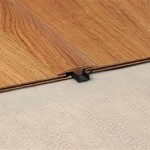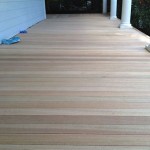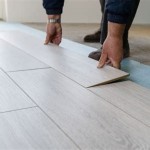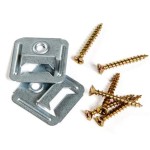Hardwood Flooring Quality Grade
Hardwood flooring offers timeless elegance and durability, making it a popular choice for homeowners. However, navigating the various quality grades available can be confusing. Understanding these grades is crucial for selecting flooring that meets both aesthetic preferences and budgetary constraints. This article explores the key factors that determine hardwood flooring quality grades and what consumers should consider during the selection process.
Appearance
The appearance of hardwood flooring is a significant determinant of its grade. Grading systems often categorize boards based on the presence and size of natural characteristics like knots, mineral streaks, and sapwood. Higher grades typically feature more uniform color, fewer knots, and a cleaner overall appearance. Lower grades, while often more affordable, may exhibit more variation in color and a greater presence of natural character marks. This doesn't necessarily indicate lower quality in terms of structural integrity, but rather a different aesthetic.
Manufacturers employ different grading systems, making direct comparisons challenging. Some common terms used include "Clear," "Select," "#1 Common," and "#2 Common." Clear grade typically represents the highest quality, with minimal imperfections. Select grade allows for slightly more character marks. Common grades embrace the natural variations in wood, showcasing knots and color variations as part of the floor's aesthetic appeal. Consumers should carefully examine samples and understand the specific grading system used by the manufacturer to ensure the chosen flooring aligns with their visual expectations.
Construction and Milling
Beyond the visual aspects, the construction and milling of the hardwood planks play a vital role in determining the quality grade. Precise milling ensures consistent dimensions and a smooth surface, crucial for proper installation and a level floor. The type of cut used during milling, such as plain-sawn, quarter-sawn, or rift-sawn, can also influence the flooring's stability and appearance. Quarter-sawn and rift-sawn boards are generally more stable and less prone to warping or cupping compared to plain-sawn lumber. These cuts also showcase a tighter grain pattern, often considered a premium aesthetic feature.
The species of wood also contributes to the overall quality and durability of the flooring. Harder species, like hickory and oak, are more resistant to dents and scratches, making them suitable for high-traffic areas. Softer species, such as pine and cherry, offer a different aesthetic but may require more careful maintenance to prevent damage. Understanding the characteristics of different wood species is crucial for selecting flooring appropriate for the intended use and lifestyle of the homeowner.
Durability and Finish
Durability is a critical consideration for hardwood flooring. While the wood species and milling contribute to inherent durability, the finish applied to the surface also plays a significant role. The finish protects the wood from moisture, scratches, and stains, extending its lifespan. Different finishes offer varying levels of protection and require different maintenance regimens. Surface finishes, such as polyurethane and acrylic, create a protective layer on top of the wood, while penetrating finishes soak into the wood fibers, offering a more natural look.
The thickness of the hardwood planks also affects durability. Thicker planks can be sanded and refinished multiple times, extending the life of the floor. This is particularly important for high-traffic areas where the floor is subjected to more wear and tear. The overall quality of the finish, including its application and uniformity, contributes to the flooring's ability to withstand daily use and maintain its appearance over time. Manufacturers often specify the number of coats of finish applied and the type of finish used, providing consumers with valuable information for assessing durability.
Moisture Content and Installation
Proper moisture content is essential for the long-term performance of hardwood flooring. Wood is a hygroscopic material, meaning it absorbs and releases moisture from the surrounding environment. Excessive moisture can cause the flooring to expand, leading to cupping or buckling. Conversely, excessively dry conditions can cause the wood to contract, leading to gaps between planks. Manufacturers typically specify the ideal moisture content for their flooring, and it's crucial to ensure the flooring acclimates to the environment before installation.
The installation process itself plays a significant role in the final quality and longevity of the hardwood floor. Proper subfloor preparation, including ensuring a level and dry surface, is critical. Correct installation techniques, including proper nailing or gluing, are essential for preventing issues like squeaking or movement of the planks. Engaging a qualified and experienced installer is crucial for ensuring the flooring is installed correctly and performs as expected.

Flooring 101 Understanding Wood Grades Carlisle Wide Plank Floors

Wood Grades Warren Christopher

Flooring 101 Understanding Wood Grades Carlisle Wide Plank Floors

Hardwood Flooring Grades Explained Infographic

Understanding Wood Flooring Grades

Wooden Flooring Thickness 75 Mm At 200 Sq Ft In Pune Id 22734357133

How To Buy Unfinished Hardwood Flooring Rw Supply Design

What Do Wood Flooring Grades Mean And Beyond Blog

Great Quality Grade Ab Ce Certified Indoor Solid Wood Flooring Md 04 China Hardwood Made In Com

Understanding Wood Flooring Grades
Related Posts








